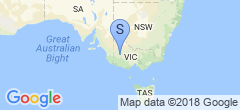NTSC Games hooked up
I brought home a ton of video game shit from the US (customs people scanning our bags probably had an interesting time), and over the last couple of days I decided it’s time to start looking at some of it.
 On Sunday, I took the Game Gear apart and started cleaning it up a bit, connected a 9v power supply to it (it’s supposed to have a 10VDC brick, but the batteries are 9v total at the best of times, so I thought a 9v supply would be OK) and got it to actually boot, which is an improvement. Unfortunately, the screen has several vertical lines in it. That could be the capacitors (which I’m going to replace anyway, as I lack sound as well and they’re a common failure on these units), or the LCD connector (which is apparently just a matter of heating it up and reseating all the connectors), or it could be the LCD driver itself (which basically means replacing the LCD, most likely via doing a TV-out mod and replacing it with a more modern screen, like that from an automotive reversing camera).
On Sunday, I took the Game Gear apart and started cleaning it up a bit, connected a 9v power supply to it (it’s supposed to have a 10VDC brick, but the batteries are 9v total at the best of times, so I thought a 9v supply would be OK) and got it to actually boot, which is an improvement. Unfortunately, the screen has several vertical lines in it. That could be the capacitors (which I’m going to replace anyway, as I lack sound as well and they’re a common failure on these units), or the LCD connector (which is apparently just a matter of heating it up and reseating all the connectors), or it could be the LCD driver itself (which basically means replacing the LCD, most likely via doing a TV-out mod and replacing it with a more modern screen, like that from an automotive reversing camera).
In to Jaycar on monday morning to see a man about some capacitors, and they want $2ea for them. For that money (it has nearly 70 capacitors total, with about 20 of them candidates for replacement) I could either buy another, already repaired Game Gear off eBay, or I could spend significantly less and buy a bag of bulk caps from China. The quality of the caps is (maybe) better, but it’s not like I will play this thing all that much - I just want it to be working when it sits on the shelf.
Next up was looking at Sabriena’s SNES. The 10VDC power supply is looking tricky, even though I was prepared to cut the proprietary socket out and replace it with a more common barrel socket. There are options available via mail order, but I’ll wait a bit on that. I was also going to consider modding one or both SNESes to output “Component” video, but it turns out like many others, our LCD doesn’t like 240p over component (it handles 240p over composite just fine). If I eventually go the framemeister/upscaler route, I might as well just use RGB instead of some dodgy circuitry inside them.
After that, it was on to the PS2. I got brave, and plugged it into the stepdown convertor that we got from a chinese eBay seller, who misunderstood our complaint. We bought an aquarium filter in the US, and they sent us one that worked on 240v - it was terribly slow and ineffective on 110v. When we complained, they sent us a stepdown convertor which switches 240v down to 110v - the wrong way! I can’t remember how we resolved that situation, I think they just refunded everything, but it doesn’t matter.
The point is I had this little black box that purportedly is good for up to 50W. The PS2 is rated to draw up to 35W, which made me concerned - I’m told it’s good to have 100% headroom in them. But it worked, with the convertor only getting moderately hot - like a power brick of any sort would under load, and certainly not as hot as a laptop charger.
So that works, so I decided to try the Dreamcast. It didn’t work - the power light came on, the drive span up, the power light flickered, then went out. It did this twice, so I don’t think it’s destroyed anything. What’s going on here? Does the DC draw more power than a PS2 when it initially turns on? The DC is rated at drawing up to 27W, compared to the PS2’s 35W, but that’s not to say that the startup current is the same. Did something die, perhaps triggered by the airplane flight (though both consoles were in the same piece of luggage). I may look into buying a dead Aussie Dreamcast and swapping the power board over, so I can run it without a stepdown convertor, assuming that both motherboards I brought aren’t dead.

